Fort Augustus had already caught my eye twice as a pretty little town. Both times I didn’t have enough time and drove on with a regretful sigh without stopping. But this time I wasn’t going to let that happen again…
Page Contents (click line to jump the text)
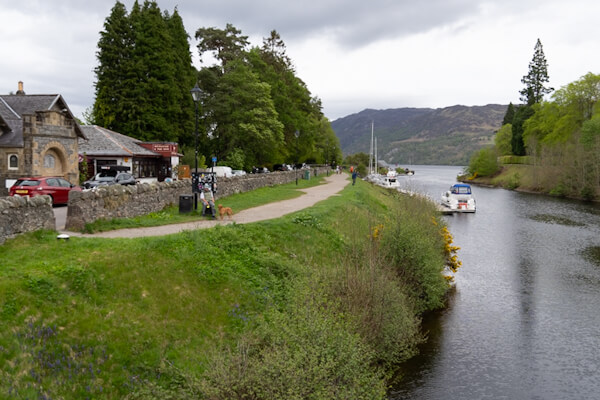
Intro and travel report
On our tour of Scotland, we also travelled from Fort William via Fort Augustus to Inverness.
The small town of Fort Augustus lies at the mouth of the Caledonian Canal into Loch Ness. What makes it special is a series of locks that bridge the difference in height between the canal and the lake.
These are located in the middle of the town, lined with small, cosy old houses, and are the main attraction here.

As this route is also used by numerous bus tours, there are many tourists here who use their break to watch the numerous houseboats passing through the locks in summer, shop in one of the souvenir shops or stop off at one of the cafés.
There is also a large excursion boat (or several) here, which many visitors apparently use to take a tour of Loch Ness.
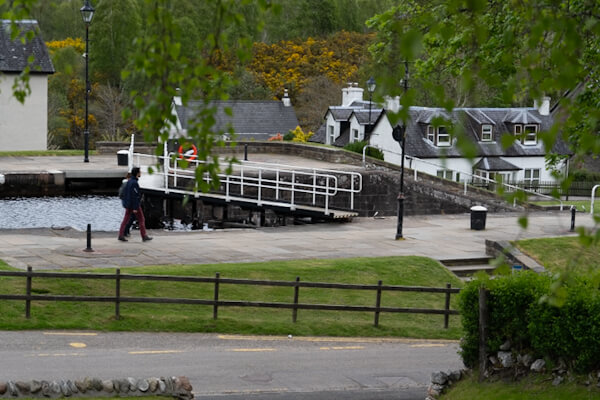
The small town is clearly tourist-oriented. But that also has its advantages: for one thing, there is a very large car park where we can easily park our (rather large) motorhome. And for another, Fort Augustus is in good condition: the small, old houses along the canal are well maintained and look very pretty. The streets behind them also look mostly good.

Since I like boats, I mostly stay to the left and right of the locks, but I also take a short walk through the village before returning to the car park and continuing our journey.
Was the short stop worthwhile? I’m not a fan of busloads of tourists, but yes, Fort Augustus is a pretty little town and I’m glad I stopped this time and took a few photos.
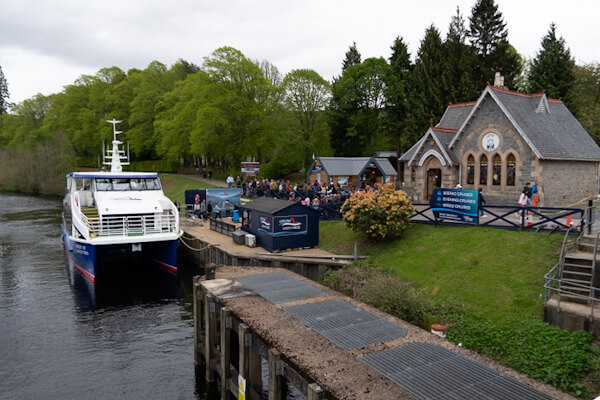
We had also considered staying here overnight, but because it was still early afternoon, we drove a little further. However, Fort Augustus is definitely a good place to stay overnight. Arrive in the evening, stroll through the town, do a little shopping, enjoy a nice meal and take a boat trip on Loch Ness the next day – doesn’t sound too bad, does it?
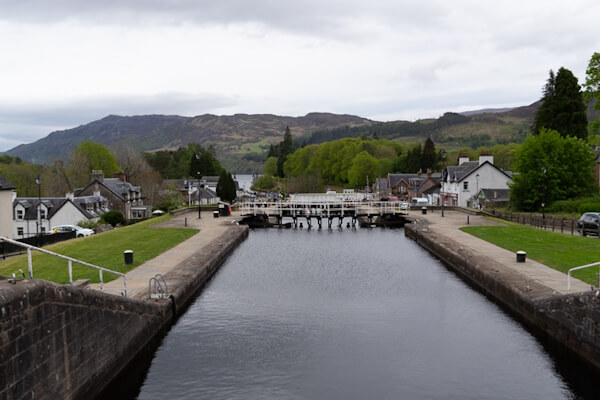
Fort Augustus and the Caledonian Canal
The small town of Fort Augustus lies in the heart of the Highlands. More precisely, it lies in the middle of the Caledonian Rift, or Great Glen. This is a deep geological fault that cuts through Scotland from south-west to north-east.
To the west lie the western Highlands with the Outer Hebrides offshore, and to the east lie the eastern Highlands with the Cairngorms National Park.
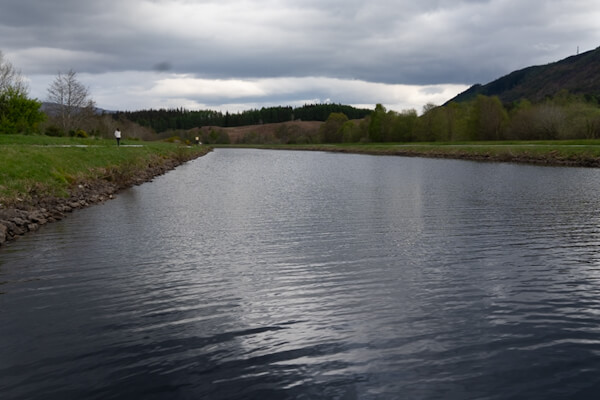
The caledonian rift is partly filled by elongated lakes, Loch Lochy, Loch Oich and Loch Ness, by far the largest lake, and the small Loch Doufour, just before Inverness. The estuaries or sea bays of Moray Firth near Inverness and Firth of Lorne near Fort William are also part of it.
The Caledonian Canal consists of several sections and bridges the parts of the Caledonian divide that are not filled with lakes. This creates a continuous waterway from the Atlantic Ocean in south-west Scotland to the northern North Sea in north-east Scotland.
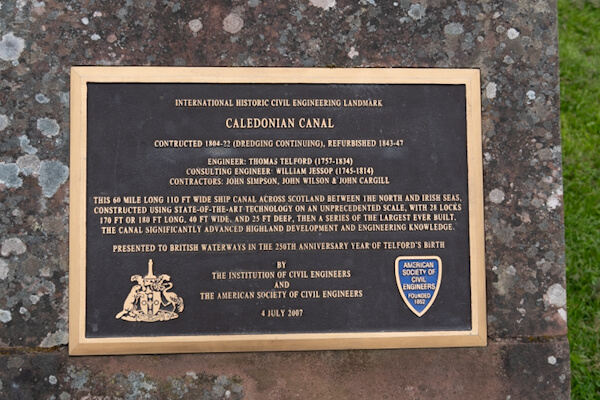
The canal was built at the beginning of the 19th century to create a safe connection between the west coast and the east coast of Scotland. This allowed merchant ships wishing to circumnavigate Scotland to avoid at least parts of the stormy west coast.
However, as the canal is relatively narrow and merchant ships became larger and larger, it soon lost its importance as a trade route. Today, it is mainly used by numerous recreational boats, houseboats, motor yachts and sailing yachts.
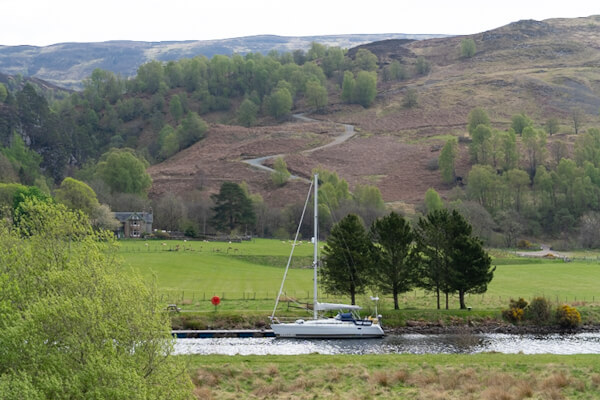
The canal is almost 100 kilometres long and reaches a height of about 30 metres above sea level. These differences in height are compensated for by 29 locks, some of which are arranged individually and some as lock staircases.
You can also find such a lock staircase in Fort Augustus, where 5 lock chambers are arranged directly behind each other. The 6 wooden lock gates are still moved by hand today.
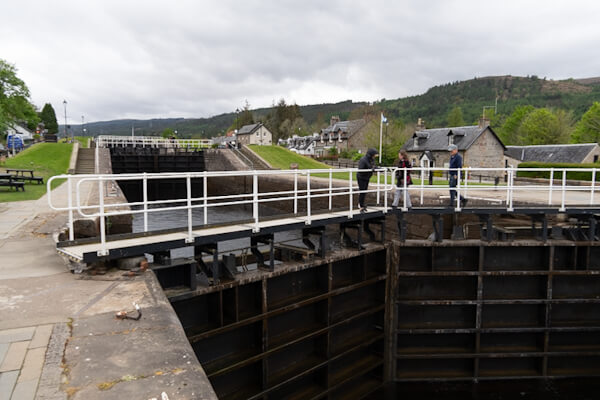
The location on the canal and the bridge over it was once strategically important and was controlled by a military fort, hence the name Fort Augustus. In the mid-19th century, the fort was purchased by a nobleman and used as a hunting lodge for a while before becoming a Benedictine monastery for a time.
The main attractions of Fort Augustus are undoubtedly the locks and the surrounding small old houses, the Clansmen Centre with an exhibition on Highland life (see: https://www.clansmancentre.uk) and the Loch Ness boat tours next to the Centre (see: https://www.cruiselochness.com).

Loch Ness and it´s Monster
And that brings us to the legendary Loch Ness and Nessie, the Loch Ness monster.
Loch Ness is 36 kilometres long, approximately three kilometres wide and around 230 metres deep. It is one of the largest lakes in Scotland and Great Britain and, due to its depth, has the largest volume of water of any British lake.
On its western shore lies Urquhart Castle, the ruins of a late medieval castle dating from the 13th to 16th centuries. Today, it is a popular tourist attraction.
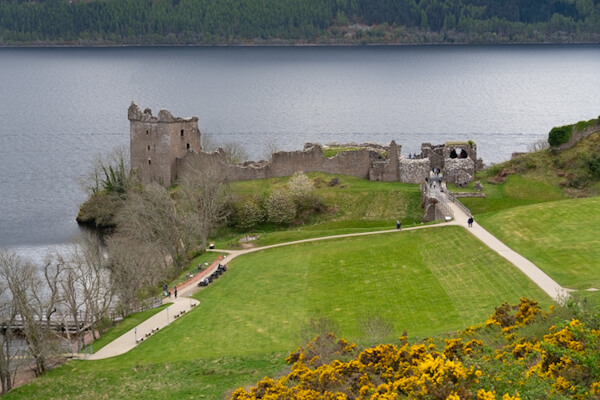
In the depths of Loch Ness lie thousands of years old Scottish mystical creatures, as everywhere else in Scotland. And then there is a much more modern creature here in particular: Nessie, the Loch Ness monster.
Nessie was first sighted in 1933 and reported in the newspaper. In 1934, a blurry black-and-white photo appeared showing a dark body in the water with a long neck and small head. This was the first of numerous fake photos that would appear in the following years.
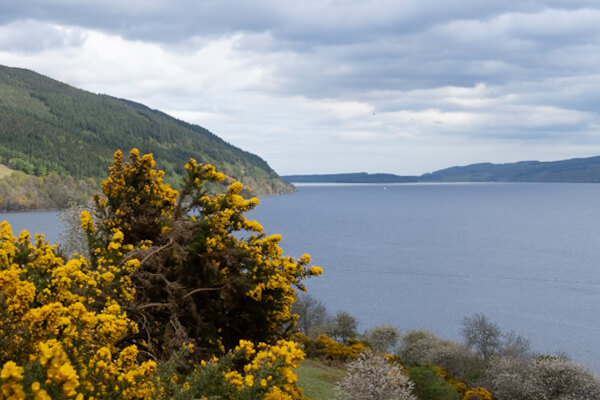
It is debatable whether Nessie is a modern story, as the annals of Saint Columba from the 7th century already mention a water monster in this region, albeit in the River Ness, which feeds Loch Ness. However, there were numerous water monster legends at that time, which puts the story of Saint Columba into perspective.
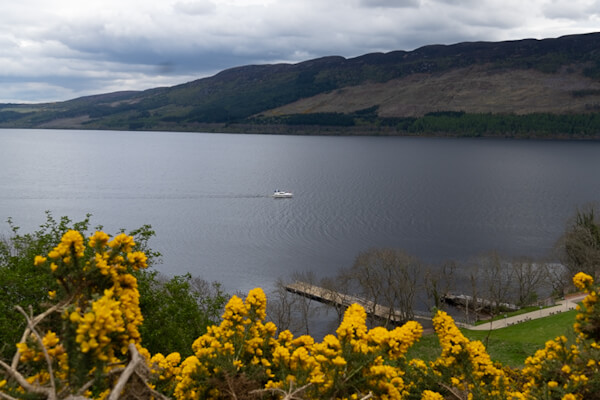
The idea that a strange creature, possibly the last dinosaur, could live in the depths of Loch Ness captured the imagination of many people. Boats, binoculars, cameras and even homemade submarines were used in the search for Nessie.
At the Loch Ness Centre in Drumnadrochit on the western shore of Loch Ness, you can learn all about the search for Nessie (see: https://lochness.com ).
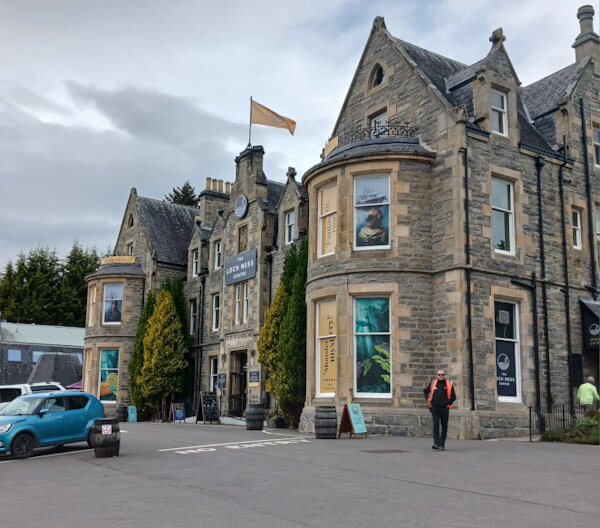
Conclusion
The route through the Great Glen and along Loch Ness to Inverness is one of the most popular routes in Scotland. This is certainly due in part to the fact that the roads are suitable for coaches, whereas in other, more remote areas of the Highlands, they can be extremely narrow or even single-lane.
In midsummer, you should consider whether you want to join the crowds that pass through here. But in spring or late summer/autumn, I can definitely recommend it.
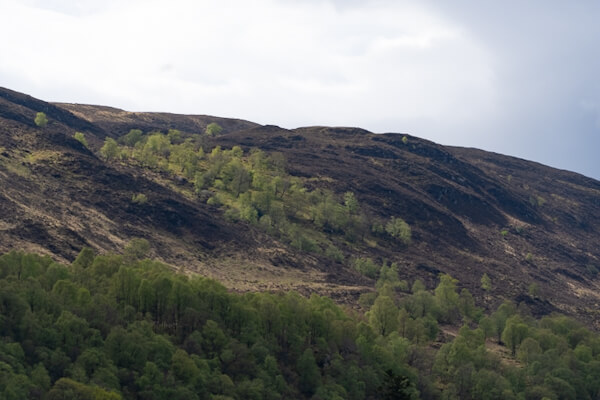
The journey from Fort William to Inverness is very beautiful, and you can definitely take a break at small towns and attractions such as Fort Augustus, Urquhart Castle or the Loch Ness Centre to have a look around.
Loch Ness itself is beautiful, not necessarily spectacular, but beautiful. And who knows, maybe on your boat tour you’ll suddenly see a humped back with a long neck and a small head emerge from the water…

More interesting articles for you
ULLAPOOL AND THE WILD NORTH COAST 500
ACROSS THE CAIRNGORMS NATIONAL PARK AND THROUGH ROYAL DEESIDE
HOW THE SCOTS LIVED BACK THEN: AT THE HIGHLAND FOLK MUSEUM
Image credits Cover image: Urquhart Castle (Photo: Ulrich Knüppel-Gertberg)